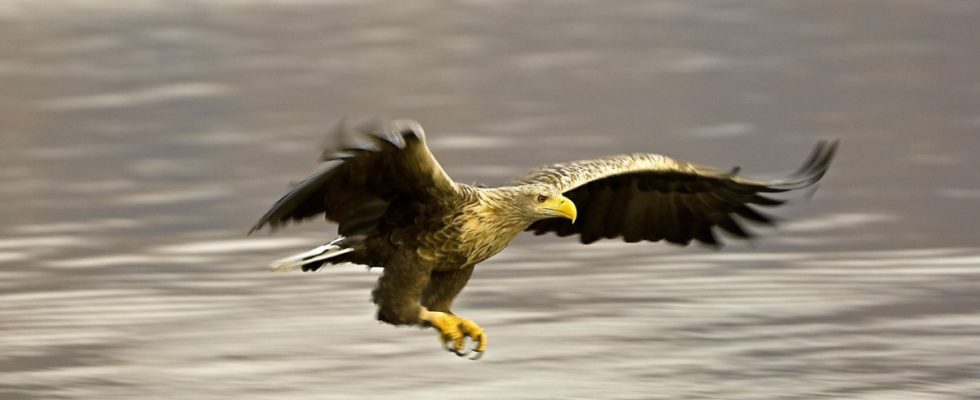White-tailed eagles are extremely rare in Bavaria. The State Office for the Environment estimates the population of the mighty birds of prey, which can reach a wingspan of up to 2.4 meters, to be around 20 breeding pairs across the state. The small population lives mainly in the Upper Palatinate, the reason are the extensive, quiet forests and the many fish ponds there, where they can hunt for fish and waterfowl undisturbed.
In the vicinity of Hahnbach in the district of Amberg-Sulzbach, for example, a pair of white-tailed eagles settled down a few years ago and kept breeding. In early March, a hunter discovered the female’s carcass. It has now turned out that the bird of prey died from the rat poison Brodifacoum.
Bird conservationists are shocked by the case. Although they consider it likely that the poison was not aimed at the female sea eagle, but at another animal. Otters, for example, also live in the region, and they always cause massive trouble when they empty fish ponds. In addition, it is no longer possible to determine whether the female sea eagle ate poisoned bait or from an animal that had ingested the poison beforehand. But the bird conservationists see themselves confirmed once again in their demand for a general ban on brodifacoum and other poisons with comparable active ingredients. “This is the only way to protect rare native species, but also pets, from being poisoned by them,” says Franziska Baur from “Tatort Natur”.
The initiative documents cases such as that of the female white-tailed eagle and reports them. Because the killing of protected animal species is a criminal offence. Brodifacoum is highly toxic, it disrupts blood’s natural clotting and damages blood vessels, causing victims to bleed to death internally. According to Baur, it can only be sold to people who can show they have received training on how to use the poison properly.
“These are all crimes”
Birds of prey also fall victim to the insecticide carbofuran, most recently a red kite and a buzzard near Kallmünz in the Regensburg district. The use of the contact poison has been banned throughout the EU since 2007, and its use is fundamentally punishable. From the point of view of the “Tatort Natur” initiative, the investigative authorities are nevertheless very cautious.
This is shown by a current case from the Lower Bavarian district of Straubing-Bogen. A dead buzzard with signs of poisoning was found there in early March. Although the State Association for Bird Protection (LBV) reported the case immediately, the investigative authorities did not take action, says LBV man Andreas von Lindeiner, who also works in the “Tatort Natur” initiative. The LBV then had the carcass examined. The finding: the bird had eaten meat bait that had been prepared with carbofuran. Lindeiner has long been demanding that the police and public prosecutors take cases like these more seriously and investigate them more rigorously: “Because these are all criminal offenses that must not go unnoticed.”

